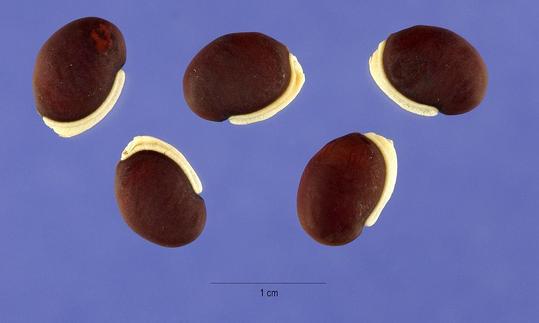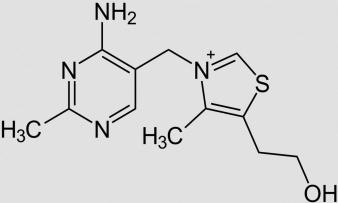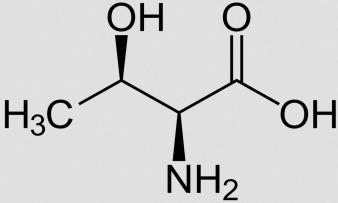Table of contents
The helmet bean ( Lablab purpureus) is also known as the Indian bean, Egyptian bean or hyacinth bean. It was formerly called the fasel bean or Dolichos lablab. The colors of this bean range from white to reddish brown to black and are marbled or solid colored.
Use in the kitchen:
Many varieties of raw pods and seeds are poisonous. The cyanogen-containing toxin can be destroyed and rendered harmless by cooking (heating) 1 or reduced by soaking. The ripe and unripe pods and seeds are edible when cooked.
The strong, aromatic taste of the helmet bean goes very well in stews or soups. With vinegar, oil and onions you can also make an excellent salad - or you can eat the helmet bean as a side dish.
In Kenya, the energizing haricot bean is traditionally known as "Njahi". There, it is eaten cooked with mashed or half-ripe bananas. In Indonesia, the flowers are also prepared as a vegetable. The beans, which are soaked, germinated, dried and then processed into flour, can also be made into a paste and fried. In India, they are used for dahl (daal). In Egypt, there is a pastry called tauniah, which is made from haricot bean flour. The roasted grains of the haricot bean can also be eaten. 2
Vegan recipe for fermented helmet beans:
Ingredients: 400 g helmet bean pods, 2 garlic cloves, 1 green chili pepper, 3 sprigs of dill, 1 bay leaf, 1 heaped tablespoon of sea salt, 3 vine leaves.
Preparation: Boil a litre of water, let it cool and dissolve the sea salt in it. Prepare a preserving jar (1 L) for filling, i.e. wash it well. Cut the chili peppers into strips, chop the garlic a little and put it in the jar together with the dill and bay leaf. Wash the haricot bean pods very well, cut the ends and press them into the jar as tightly as possible. Place the vine leaves on top. Pour as much of the boiled salt water into the jar as possible until the vine leaves are covered: there should be 2-3 cm of space to the edge. Close the jar tightly.
The pods need to ferment for 5 days at room temperature. To do this, you need to open the jar once a day so that the gases can escape. To keep the pods and leaves under water and prevent mold from forming, you can weigh them down with a clean stone. If mold does form, please do not eat any more!
After 1-2 days, the color of the water changes and it appears cloudy. After the 5th day, put the jar in the fridge to slow down the fermentation process. Now you can eat the helmet bean pods. For an even better taste, leave them closed in the fridge for up to 2 weeks and only then enjoy them.
| Not only vegans or vegetarians should read this: Vegans often eat unhealthily. Avoidable nutritional errors. |
Shopping - where to buy?
You can hardly find the helmet bean in major retailers such as Coop, Migros, Denner, Volg, Spar, Aldi, Lidl, Rewe, Edeka, Hofer etc.
Some seed shops sell seeds of the helmet bean for home cultivation. On the internet, you can also find them almost exclusively as seeds. Delicatessens, Indian or African shops may also stock helmet beans or their flour.
Found in the wild:
There are still wild forms of this species in southeastern Africa. A wild subspecies is Lablab purpureus uncinatus. One variant occurs exclusively in Namibia: Lablab purpureus var. rhomboïdeus, which has lobed leaves. 3 There is also a presumed wild form in India, Lablab lignosus. However, it has a rather repulsive smell for us. 4
Storage:
Dried, ripe beans must be stored in a way that protects them from moisture. If stored ideally and without pests, the seeds of the harebean will last for years.
Ingredients - nutritional value - calories:
The calorie content of the helmet bean is 344 kcal per 100 g. The majority of the energy is made up of carbohydrates and valuable protein. The fiber content of the ripe seeds is very high at 26%. 5
The ripe harebean seeds contain a lot of zinc (9.3 mg/100g). Only wheat germ (12.29 mg) and unpeeled hemp seeds (9.9 mg) have comparable values. 5
The essential trace element manganese is present in almost equal amounts in many beans. The black bean has 1.6 mg/100g. The germs and outer layers of grains also contain manganese. For example, millets ( sorghum and golden millet) have the same amount of manganese as the black bean, and wheat germ is also way ahead here with 13 mg/100g. 5
The thiamine content (vitamin B1) in the black bean is 1.1 mg/100g. This vitamin is also found in the outer layers of pulses, grains and nuts. The content in macadamia nuts is 1.2 mg and in wheat germ 1.8 mg/100g. 5 However, the vitamin is neither light nor heat stable and much of the vitamin is lost through soaking or cooking in water.
Further information on the ingredients can be found in the tables at the bottom after the text.
Health aspects - effects:
Beans are made up of valuable amino acids and are therefore an excellent source of protein. Their carbohydrate content (with a high fiber content) keeps you full for a long time and has a positive effect on intestinal health. The carbohydrates they contain are absorbed into the blood very slowly, which is also positive for diabetics.
The soluble fibers bind cholesterol when excreted and thus lower cholesterol levels.
Beans contain antioxidants that protect cells from free radicals. Regular consumption of beans is said to help against cardiovascular diseases and arteriosclerosis and even prevent cancer. 6
Dangers - Intolerances - Side effects:
Raw hare beans, ripe or unripe, contain a cyanogen toxin that only decomposes after a 15-minute heating process. The water used should always be thrown away, as the poison dissolves in the water. The toxic phytohaemagglutinins are also contained in the common bean ( Phaseolus vulgaris) and led to weight loss and even death when fed to test animals. 7
The toxin content varies greatly depending on the variety and part of the plant. However, consumption of any raw parts of the plant is not recommended.
Folk medicine - natural healing:
In Kenya, nursing mothers eat a lot of haricot beans because eating them is said to stimulate milk production. 8
In traditional medicine, a syrup made from haricot bean is used to treat ear and throat infections. In Southeast Asia, poultices made from haricot bean leaves help against eczema, colic and gonorrhea. The seeds of haricot bean are said to have antispasmodic, aphrodisiac, antipyretic and stomach-strengthening properties. 2
Occurrence - Origin:
The helmet bean probably comes from tropical southeast Africa. The plant also grows wild there. However, the greatest morphological diversity of this Fabaceae can be found in India. The exact place of origin can no longer be determined. In eastern Africa, intensive cultivation of the common bean ( Phaseolus vulgaris) and cowpea ( Vigna unguiculata) for export has displaced the local production of the helmet bean. 9
Cultivation - Harvest:
As a climbing plant, the helmet bean can produce shoots up to 6 m long in tropical areas. The tropical helmet bean is usually only grown as an annual for grain use. If the Indian bean is left standing for up to 3 years, growth decreases a little more each year. Due to its long taproots, the Egyptian bean can survive dry periods well, but it is very sensitive to waterlogging. It requires hardly any care and is very disease-resistant.
To grow the hyacinth bean, choose a sunny, warm place. If it grows in the shade, the leaves will be less dense. On hot, sunny days, the hyacinth bean must be watered well, otherwise the plant will lose its leaves from below.
The cultivation of the chick bean begins in mid-March under glass at 18-20 °C. In May, after the Ice Saints (frost days), the bean plants can be put outside. The chick bean needs a vertical climbing aid; cross braces are not necessary. As it produces a lot of foliage, the chick bean can also be used as a privacy screen. The fragrant flowers with their white, pink to violet coloring also make them attractive as ornamental plants. In Europe they are usually only used as annuals, as they are not winter hardy. In colder areas, the plants can also be kept in a greenhouse or overwintered indoors.
The unripe pods are purple to violet in color, are flat, boat-shaped and sometimes up to 20 cm long. Depending on the use, the helmet bean is harvested when unripe or ripe. 3 In non-tropical areas, the helmet bean is not ripe until September or October.
Each pod contains up to 20 seeds, which are about 1 cm long and 0.5 cm thick. The egg-shaped beans are plain, spotted or marbled in white, reddish brown to black. 10 The white navel covers the seeds like a kind of helmet, which is probably what gave the bean its name in German.
General information:
The genus Lablab belongs to the subfamily Faboideae within the family Fabaceae. The word "lablab" comes from Arabic and refers to the rattling of the dry seeds inside the bean pod. 4
The helmet bean is also used in agriculture as green manure to improve the soil and enrich nitrogen. In the tropics, the leaves and stems are also used as animal feed. In Africa and East Asia, the helmet bean also plays an important role in natural medicine. 11
Alternative names:
Carl von Linné first described the helmet bean in 1753 under the name Dolichos lablab. In 1970, Bernard Verdcourt gave this species its current name, Lablab purpureus. The old name is still very persistent, however, and is often used as a synonym.
Other synonyms are. Dolichos purpureus L., Lablab niger (Medik.), Lablab lablab (L.) Lyons, Vigna aristata Piper, Lablab vulgaris (L.) Savi.
According to Verdcourt, two subspecies are known: Lablab purpureus subsp. bengalensis and Lablab purpureus subsp. purpureus. 12
According to Wikipedia, the hyacinth bean is known in English as: hyacinth bean, lablab-bean, bonavist bean/pea, dolichos bean, seim bean, lablab bean, Egyptian kidney bean, Indian bean, bataw or Australian pea.
Other common names in English are: Tonga bean, papaya bean, poor man bean, seim and butter bean.
Literature - Sources:
Bibliography - 12 Sources (Link to the evidence)
| 1. | Guretzki S, Papenbrock J. Characterization of Lablab purpureus Regarding drought tolerance, trypsin inhibitor activity and cyanogenic potential for selection in breeding programmes. Journal of Agronomy and Crop Science. 2014:200/1. |
| 2. | Geb.uni-giessen.de Helmbohne. |
| 3. | Garten-wissen.com Helmbohne. |
| 4. | Brücher H. Tropische Nutzpflanzen. Ursprung, Evolution und Domestikation. Springer-Verlag: Berlin, Heidelberg, New York. 1977. |
| 5. | USDA United States Department of Agriculture. |
| 6. | Gesundheit.de Bohnen wertvolle Inhaltsstoffe. |
| 7. | Jaffé WG. Toxische und Wachstumshemmende Faktoren in Bohnen. Qualitas plantarum et materiae vegetabiles. 1969. 17(2). |
| 8. | Maundu PM, Ngugi GW, Kabuye CHS. Traditional food plants of Kenya. National Museums of Kenya. English Press. Nairobi, Kenya. 1999. |
| 9. | Maass BL, Knox MR, Venkatesha SC, et al. Lablab purpureus (L.) Sweet – a crop lost for Africa?. Tropical Plant Biology. 2010:3/3. |
| 10. | University of Agricultural Sciences, Bangalore, India. Dolichos Bean - Lablab purpureus (L.) Sweet. |
| 11. | Wikipedia Helmbohne. |
| 12. | Verdcourt B. Lablab Adans. Studies in the Leguminosae-Papilionoideae for the `Flora of Tropical East Africa`: III. Kew Bulletin. 24(3). 1970. |








Comments